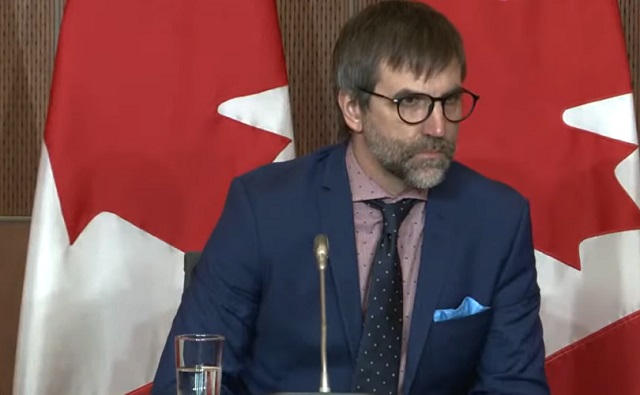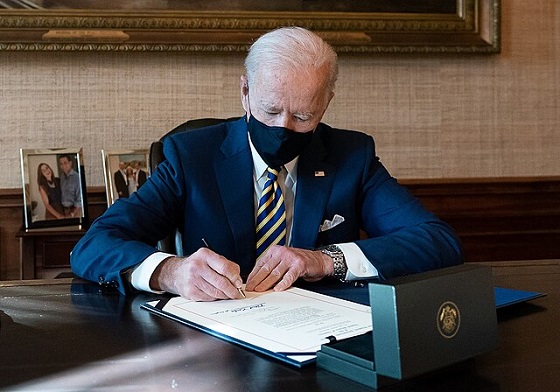Alberta
Trudeau gov’t pushing forward with net-zero regulations despite Supreme Court ruling

From LifeSiteNews
Environment Minister Steven Guilbeault claimed that a Supreme Court ruling returning power to the provinces does not affect federal plans to cap emissions from the oil and gas sector, nor the Clean Electricity Regulations.
The Liberal government is moving ahead with net-zero emission regulations despite a Supreme Court ruling restricting the federal government’s “no more pipelines” legislation.
On October 16, Environment Minister Steven Guilbeault declared that the Supreme Court ruling returning power to the provinces does not affect federal plans to cap emissions from the oil and gas sector, nor the Clean Electricity Regulations.
“The opinion of the court does not call into question other regulatory initiatives under development, and we are confident that they are within the purview of the federal government,” Guilbeault said in a statement to The Globe and Mail.
Guilbeault further claimed that the regulations are within Ottawa’s power to regulate as they are based on different federal authorities than the Impact Assessment Act.
The decision to press ahead with energy regulation comes on the heel of an October 13 ruling by the Canadian Supreme Court which found the Trudeau government’s 2019 Impact Assessment Act (IAA), dubbed the “no more pipelines” bill by critics, to be largely unconstitutional.
The Supreme Court declared that most of the IAA was unconstitutional with the exception of Sections 81 to 91, which refer to projects under federal authority on federal lands or outside Canada. Therefore, those projects would fall under federal jurisdiction and are not unconstitutional for the federal government to regulate.
However, the Court’s ruling did restore provincial autonomy over projects that don’t fall under federal jurisdiction, determining that the Trudeau government’s requirement that all provincial natural resource projects conform to the Liberals’ social and “climate change” policies is unconstitutional.
Guilbeault’s Monday statement comes as Canadians await the federal government’s amendment of the Canadian Environmental Protection Act, which is designed to phase out natural gas plants by 2030. The act is expected to be the means to implement the emissions cap and electricity regulations across the country.
His position echoes that of legal experts who warned that the Supreme Court’s decision will likely have no impact on other federal moves such as the Clean Electricity Regulations or oil sands emissions caps.
However, Guilbeault seems to be backtracking from his initial statement following the Supreme Court ruling; on that day, Guilbeault declared that the federal government is willing to “collaborate” with the provinces.
“We accept the court’s opinion,” he said during a virtual media meeting last Friday. “It provides new guidance on the Impact Assessment Act, while explicitly affirming the right of the government of Canada to put in place impact assessment legislation and collaborate with provinces on environmental protection.”
“We will now take this back and work quickly to improve the legislation through Parliament,” Guilbeault announced, but failed to give a timeline for the new legislation.
Alberta Premier Danielle Smith, a staunch opposer of Trudeau’s net-zero regulations, celebrated the court decision as returning power to the provinces.
“Today’s decision significantly strengthens our legal position,” Smith told reporters. “If they’re [the federal government] trying to pretend that they somehow still have the right to proceed with those offensive pieces of legislation that are clearly in our jurisdiction, they’re fooling themselves.”
Beyond the IAA, Alberta has been consistent in its fight against Trudeau’s push for increased energy regulations, with Smith repeatedly refusing to submit to the Liberal government’s demands, warning that Canadians could freeze in the winter if new “clean” electricity and energy regulations are enforced.
Late last month, Smith announced that she is preparing to use her province’s Sovereignty Act to fight the electricity regulations if the Trudeau government does not relent.
The draft version of the federal government’s “Clean Electricity Regulations” (CER) states that there will be billions in higher costs associated with a so-called “green” power transition, especially in the resource-rich provinces of Alberta, Saskatchewan, New Brunswick, and Nova Scotia, which use natural gas and coal to fuel power plants.
Business executives in Alberta’s energy sector have also warned that the Trudeau government’s fast-paced “green” transition could lead to unreliability in the power grid.
In addition to Smith, Saskatchewan Premier Scott Moe has likewise promised to fight back against Trudeau’s new regulations, saying recently that “Trudeau’s net-zero electricity regulations are unaffordable, unrealistic and unconstitutional.”
“They will drive electricity rates through the roof and leave Saskatchewan with an unreliable power supply. Our government will not let the federal government do that to the Saskatchewan people,” he charged.
The Trudeau government’s current environmental goals – in lockstep with the United Nations’ “2030 Agenda for Sustainable Development” – include phasing out coal-fired power plants, reducing fertilizer usage, and curbing natural gas use over the coming decades.
The reduction and eventual elimination of the use of so-called “fossil fuels” and a transition to unreliable “green” energy has also been pushed by the World Economic Forum (WEF) – the globalist group behind the socialist “Great Reset” agenda – an organization which Trudeau and some of his cabinet are involved.
Alberta
Alberta takes big step towards shorter wait times and higher quality health care

From the Fraser Institute
On Monday, the Smith government announced that beginning next year it will change the way it funds surgeries in Alberta. This is a big step towards unlocking the ability of Alberta’s health-care system to provide more, better and faster services for the same or possibly fewer dollars.
To understand the significance of this change, you must understand the consequences of the current (and outdated) approach.
Currently, the Alberta government pays a lump sum of money to hospitals each year. Consequently, hospitals perceive patients as a drain on their budgets. From the hospital’s perspective, there’s little financial incentive to serve more patients, operate more efficiently and provide superior quality services.
Consider what would happen if your local grocery store received a giant bag of money each year to feed people. The number of items would quickly decline to whatever was most convenient for the store to provide. (Have a favourite cereal? Too bad.) Store hours would become less convenient for customers, alongside a general decline in overall service. This type of grocery store, like an Alberta hospital, is actually financially better off (that is, it saves money) if you go elsewhere.
The Smith government plans to flip this entire system on its head, to the benefit of patients and taxpayers. Instead of handing out bags of money each year to providers, the new system—known as “activity-based funding”—will pay health-care providers for each patient they treat, based on the patient’s particular condition and important factors that may add complexity or cost to their care.
This turns patients from a drain on budgets into a source of additional revenue. The result, as has been demonstrated in other universal health-care systems worldwide, is more services delivered using existing health-care infrastructure, lower wait times, improved quality of care, improved access to medical technologies, and less waste.
In other words, Albertans will receive far better value from their health-care system, which is currently among the most expensive in the world. And relief can’t come soon enough—for example, last year in Alberta the median wait time for orthopedic surgeries including hip and knee replacements was 66.8 weeks.
The naysayers argue this approach will undermine the province’s universal system and hurt patients. But by allowing a spectrum of providers to compete for the delivery of quality care, Alberta will follow the lead of other more successful universal health-care systems in countries such as Australia, Germany, the Netherlands and Switzerland and create greater accountability for hospitals and other health-care providers. Taxpayers will get a much better picture of what they’re paying for and how much they pay.
Again, Alberta is not exploring an untested policy. Almost every other developed country with universal health care uses some form of “activity-based funding” for hospital and surgical care. And remember, we already spend more on health care than our counterparts in nearly all of these countries yet endure longer wait times and poorer access to services generally, in part because of how we pay for surgical care.
While the devil is always in the details, and while it’s still possible for the Alberta government to get this wrong, Monday’s announcement is a big step in the right direction. A funding model that puts patients first will get Albertans more of the high-quality health care they already pay for in a timelier fashion. And provide to other provinces an example of bold health-care reform.
Alberta
Alberta’s embrace of activity-based funding is great news for patients

 From the Montreal Economic Institute
From the Montreal Economic Institute
Alberta’s move to fund acute care services through activity-based funding follows best practices internationally, points out an MEI researcher following an announcement made by Premier Danielle Smith earlier today.
“For too long, the way hospitals were funded in Alberta incentivized treating fewer patients, contributing to our long wait times,” explains Krystle Wittevrongel, director of research at the MEI. “International experience has shown that, with the proper funding models in place, health systems become more efficient to the benefit of patients.”
Currently, Alberta’s hospitals are financed under a system called “global budgeting.” This involves allocating a pre-set amount of funding to pay for a specific number of services based on previous years’ budgets.
Under the government’s newly proposed funding system, hospitals receive a fixed payment for each treatment delivered.
An Economic Note published by the MEI last year showed that Quebec’s gradual adoption of activity-based funding led to higher productivity and lower costs in the province’s health system.
Notably, the province observed that the per-procedure cost of MRIs fell by four per cent as the number of procedures performed increased by 22 per cent.
In the radiology and oncology sector, it observed productivity increases of 26 per cent while procedure costs decreased by seven per cent.
“Being able to perform more surgeries, at lower costs, and within shorter timelines is exactly what Alberta’s patients need, and Premier Smith understands that,” continued Mrs. Wittevrongel. “Today’s announcement is a good first step, and we look forward to seeing a successful roll-out once appropriate funding levels per procedure are set.”
The governments expects to roll-out this new funding model for select procedures starting in 2026.
* * *
The MEI is an independent public policy think tank with offices in Montreal, Ottawa, and Calgary. Through its publications, media appearances, and advisory services to policymakers, the MEI stimulates public policy debate and reforms based on sound economics and entrepreneurship.
-

 2025 Federal Election1 day ago
2025 Federal Election1 day agoRCMP memo warns of Chinese interference on Canadian university campuses to affect election
-

 2025 Federal Election24 hours ago
2025 Federal Election24 hours agoResearchers Link China’s Intelligence and Elite Influence Arms to B.C. Government, Liberal Party, and Trudeau-Appointed Senator
-

 MAiD2 days ago
MAiD2 days agoDisability rights panel calls out Canada, US states pushing euthanasia on sick patients
-

 Justice2 days ago
Justice2 days agoCanadian government sued for forcing women to share spaces with ‘transgender’ male prisoners
-

 Alberta2 days ago
Alberta2 days agoAlberta takes big step towards shorter wait times and higher quality health care
-

 Energy2 days ago
Energy2 days agoTrump signs four executive orders promoting coal industry
-

 COVID-1921 hours ago
COVID-1921 hours agoFauci, top COVID officials have criminal referral requests filed against them in 7 states
-

 COVID-191 day ago
COVID-191 day agoBiden Admin concealed report on earliest COVID cases from 2019










